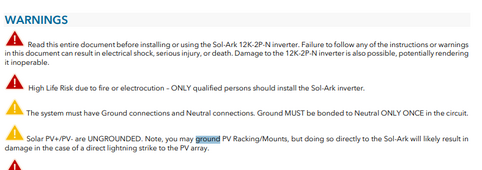As mentioned several times throughout this thread it is all about the settings and the SOC of the batteries when the sun comes out. You will want the batteries at a low SOC at daybreak so the charge controller will charge them. That means you want the SolArk to use the batteries overnight so the charge controller can charge them in the morning and you want to set the SolArk settings to charge as last resort. If that is too difficult you may need to spend some money to better utilize that one array. Because it has a different voltage from the other three, it would have to be on a separate MPPT controller and configured to put out enough voltage to meet the minimum to work with the SolArk. That means the existing three arrays would have to all go to one of the MPPT inputs. There is not enough information to know if that is possible or even an option. There is not much more I can offer beyond what has already been said.







